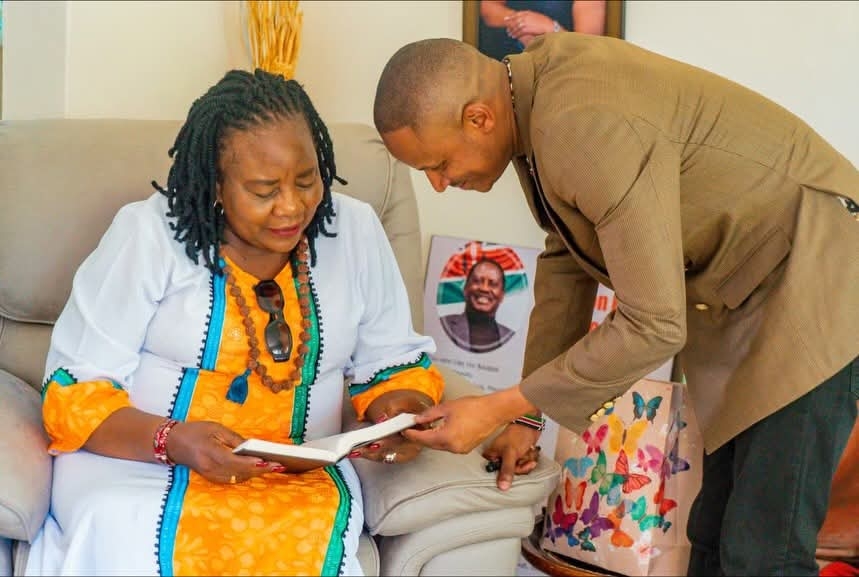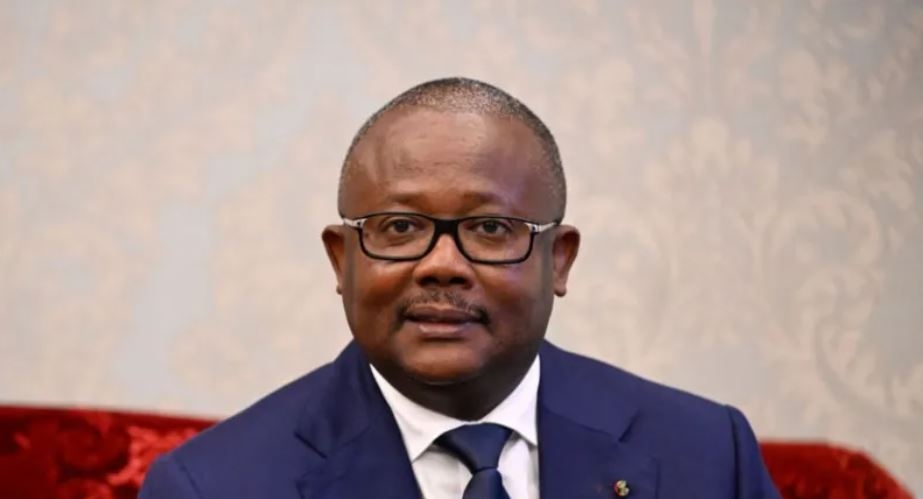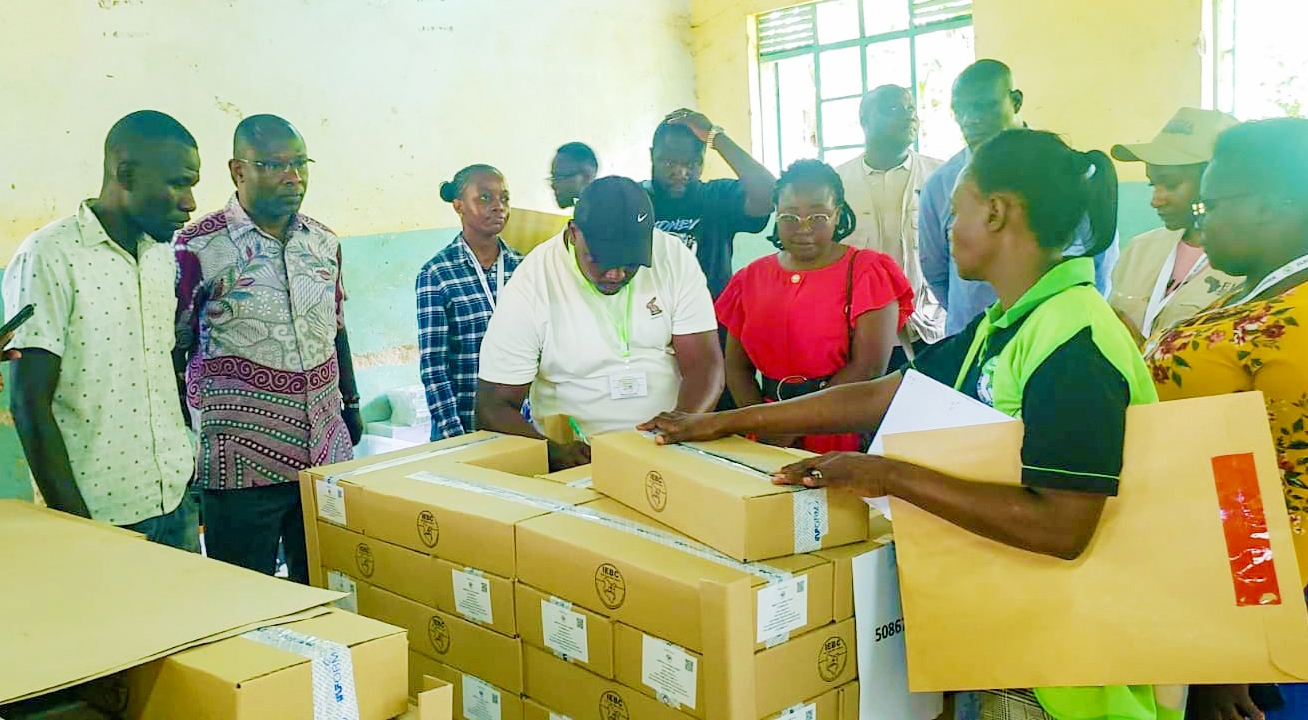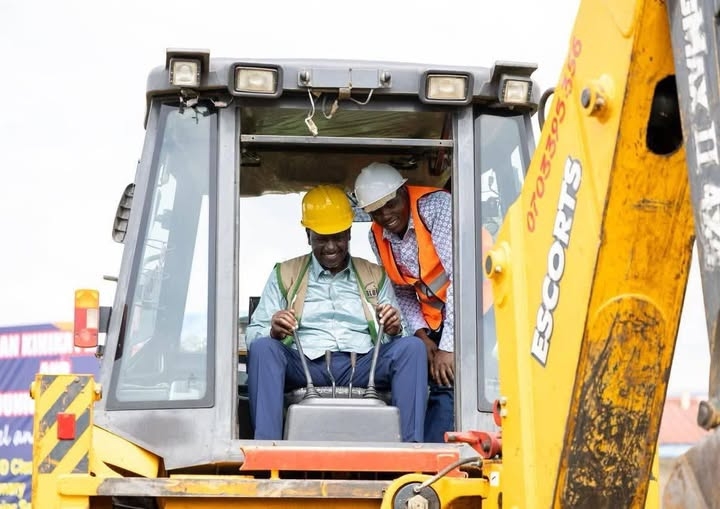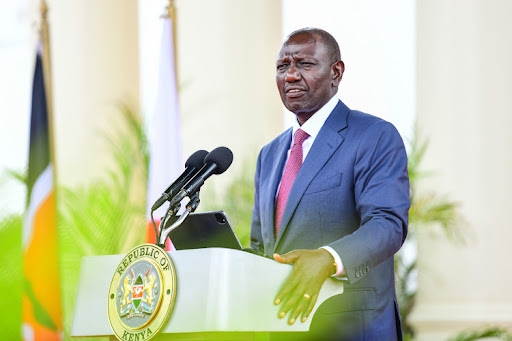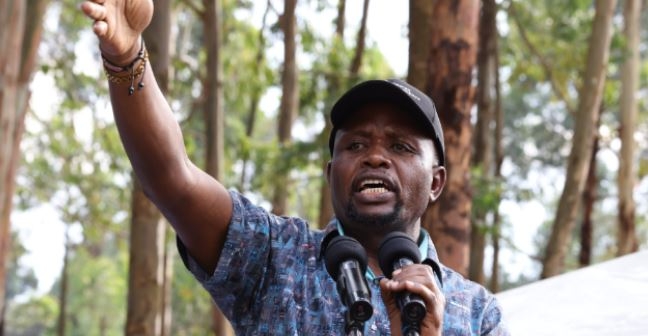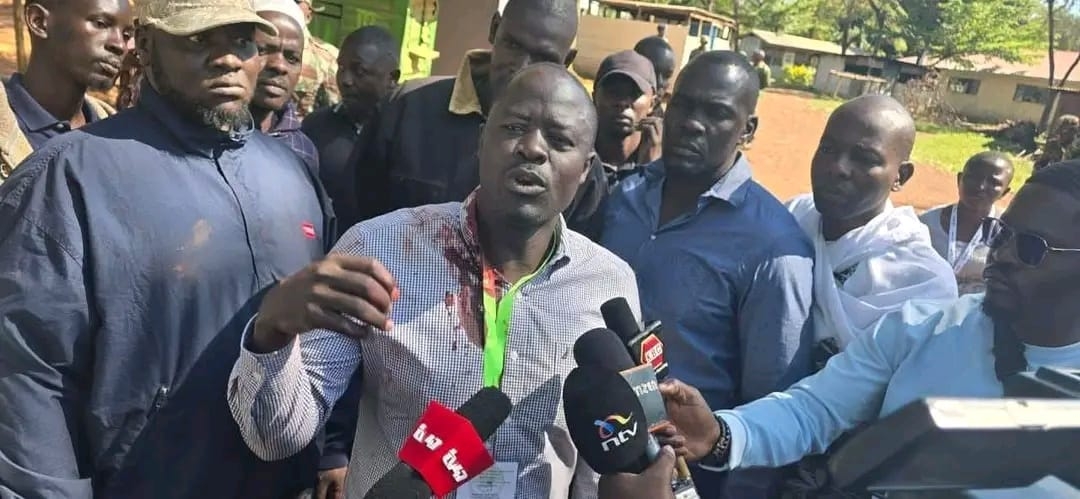The world is likely experiencing a mass extinction of its species, losing the diversity of animals, plants, fungi and even microorganisms like bacteria at an unprecedented rate.
Around 1 million animal and plant species are now threatened with extinction, many within decades, more than ever before in human history.
This is according to the Intergovernmental Science-Policy Platform on Biodiversity and Ecosystem Services.
So far, according to scientists, the planet has experienced five previous mass extinction events, with the last one wiping out the dinosaurs from existence.
The idea of the sixth mass extinction was first floated by US scientists in 2011 in an article in Nature journal. However, study after study confirms that species are now being wiped out mostly through human activity, especially through the unsustainable use of land and water, habitat loss, pollution and climate change.
This will deeply affect the future of humanity because all these species support life on earth.
This is why 196 nations of the world are gathering in Montreal to find ways to halt biodiversity loss and stop the extinction of the world’s variety of species.
At the high-level segment of the 15th meeting of the Conference of Parties to the United Nations Convention on Biological Diversity (COP15), Kenya’s Environment Minister Roselinda Soipan Tuya made a statement on Friday, saying unsustainable exploitation of earth’s resources must stop.
Nations, each represented by negotiators, are in the final stages of deliberating on the finer points of 22 targets to help halt biodiversity loss by 2030 and restore nature by 2050. In these last few days of the summit, expected to end on December 19, the text of these targets is being debated and they cannot be adopted unless all countries agree on the text.
Developing countries in the global south host most of the world’s biodiversity and have asked rich countries to give them $100 billion every year to help them conserve biodiversity.
Some of this biodiversity in countries such as Kenya includes unique bacteria and plants that are utilised by transnational pharmaceutical corporations to make medicines. This is why Kenya is especially keen to secure its share of benefits from the use of these resources in the agreement.
In some cases, the species itself is utilised, but in others, scientists make use of the species’ digital sequence information to harness the properties they need. Developing countries like Kenya argue that in either case, benefits arising from the use of digital sequence information on genetic resources should be shared fairly and equitably with provider countries (or countries of origin).
If countries agree on all issues, the final text, called the post-2020 Global Biodiversity Framework, will be adopted on Monday.
The Star’s John Muchangi spoke with Environment CS Soipan Tuya during the conference in Montreal, Canada.
You know, if we keep talking and talking and there's no money coming through to support our biodiversity initiatives, then there's nothing much we are doing. It becomes a vicious cycle of talk shows
There is a lot of disagreement, especially on funding for conservation in developing countries. How hopeful are you that we will have a deal on Monday?
The progress of the meeting is okay. One thing you have to appreciate is the fact that the discussions around the Convention on Biodiversity and the Nagoya and Cartagena protocol involve the entire globe. It's not an African issue. It's not a Kenyan issue. It's a global issue.
Negotiations mean that people might have divergent views, but you must find a way of bringing on board even the views of other people. I would want to have seen a quicker pace in decisions around resource mobilisation because that's the most important thing.
You know, if we keep talking and talking and there's no money coming through to support our biodiversity initiatives, then there's nothing much we are doing. It becomes a vicious cycle of talk shows. But I'm happy that as it stands right now, the discussions around funding are gaining traction.
In your presentation, you said Kenya supports the creation of a new fund for biodiversity. Kindly explain why the country does not prefer money be channelled through existing funds, such as the Global Environment Facility?
That is our view. Actually, it's an African position and of developing countries, largely. Other views, especially from the developed countries, is that we should have the fund situated within the already existing Global Environment Facility, and there are arguments in support of whichever view.
We are pushing for a standalone fund so that biodiversity concerns can get the attention they deserve and focus in terms of funding and support. But what I would say because now we have these diverging opposing views is, the bottom line is: Whichever funding comes, whether a standalone or one that is within GEF, it needs to be timely. It has to have a framework that makes the fund timely, easily accessible and efficient in the way it's managed and dispensed. Otherwise, we will spend another two years and come back to COP 16 in 2024 without any funding support for biodiversity.
So our discussions, even amongst the African and developed developing countries, is really we are not iron-fisted in saying we need a standalone fund. But at least let us have something that can kick off and we see tangible results in good time.
The meeting (COP15) speaks a lot about protection for indigenous groups. In Kenya, most of them, such as the Ogiek, live around forests. How can we protect their rights to access forests and at the same time prevent the destruction of forests?
It's doable. Indigenous communities are very critical in environmental and biodiversity conservation because they are the first responders and the first to be impacted by biodiversity loss. Again, our Constitution does recognise local communities, indigenous knowledge and biodiversity protection. And you can't talk about biodiversity protection without talking about the rights of our local communities because they are the custodians of the forest and natural resources.
We are looking at very effective and participatory forest management, where communities get very involved with the day-to-day management of forests and natural resources. For example, from the forest perspective, we have the Community Forest Associations, which work with the communities adjacent to the forest.
Some of them, like the Ogiek, are really dependent on the forest. Through this participatory forest management and the payment for ecosystem services, they get to benefit. Only that they need to be very highly regulated because you can't say you're an indigenous community yet you're getting into the forest and destroying the forest. It has to be a kind of symbiotic relationship where you're benefiting, maybe by putting your beehives inside the forest and protecting it also.
We also have the Plantation Establishment and Livelihood Improvement Scheme (Pelis) system, where we invite communities to come help grow trees in our commercial forests, while also growing short-term crops that do not compete negatively with their trees. That can work. But if their access to the forest becomes destructive and enhances degradation, then it cannot work.
You also spoke passionately about the need for a deal on access and benefit sharing in the exploration of genetic resources. Do we have past experiences where our biodiversity, such as medicinal herbs, was exploited without benefit to communities?
Yes. I know there is a case in Lake Bogoria where some extracts were actually exploited, taken out of the country. And there was a court case on that. [In 1992, Dr William Grant, a British microbiologist from Leicester University, discovered two organisms living in the hot caustic geysers of Lake Bogaria that soften fabrics and 'eat' indigo dye from jeans, giving them the faded look. Californian firm Genencor bought the samples from Grant, patented them and went on to clone them on an industrial scale at laboratories in the Netherlands and California. The company has since made more than $1m in sales by 2004 to detergent manufacturers and textile firms to make faded jeans. Kenya Wildlife Service sued Genencor. The matter was never resolved.]
We would like to invite investors to exploit genetic resources, but it has to be done in observance of the Nagoya Protocol [which spells out how investors should pay royalties]. The CBD is also very clear on the processes that need to be followed. Our priority now is to update our regulations, domesticate and make a Nagoya protocol a reality for us in Kenya. This is because as it stands, we only have a Legal Notice of 2006, which happened before we ratified the Nagoya protocol [in 2010]. It's outdated. There is already a bill that is before Parliament on benefit sharing. We need proper mechanisms on the equitable sharing of resources from whoever is exploiting them even if they are for export. But we have to have a clear mechanism, where the communities around have a fair system or mechanism of benefiting from our genetic resources.
Also in your presentation, you called for countries to embrace synthetic biology plus other emerging genetic technologies, such as gene drive, which are actually beneficial. How can we encourage Kenyans to embrace advances in science, noting there is still opposition to old technologies, such as Genetic Modification (GM)?
I think Kenyans are receptive to global technological trends. What we need to do is effective public participation to have the buy-in of Kenyans. We cannot continue burying our heads in the sand yet the world is moving. So the answer to that is very vigorous public participation. Once Kenyans understand, which is their constitutional right, I don't see a problem. They should be able to move with the changing technological trends of the globe.
You're very new in the ministry. What are the immediate challenges you have experienced so far?
Every single day I get text messages from Kenyans about destructive practices around our forests. They send me photos of people logging. They send me pictures of degraded biodiversity spots. My immediate challenge is that we have to step up our game as the ministry to stop the destruction of our forests and our ecosystems. We are talking about planting 15 billion trees. How do you destroy what you have and at the same time we are saying, let us add more trees?
I want to ensure we have a working hotline and a proper response system so that if we are told there are people seen in a forest cutting down trees, we are able to respond immediately. Surely action will be taken against anybody who is pulling us in the opposite direction. The President is saying, let's plant 15 billion trees over the next decade. So why would somebody be cutting down trees?
And what's going to be your focus in the ministry now for the next hopefully five years?
My focus, number one, is greening the country, which is why we are planting the 15 billion trees. We are rallying all Kenyans to plant trees for birthdays. And we are rolling that on Wednesday, December 21, this week with the President's [William Ruto’s] birthday. We are telling Kenyans on your birthday, plant trees an equivalent of your age.
The President should be turning 56. But because we are doing a countrywide campaign, we are going to plant not less than 560,000 trees on this day alone. We are calling for the help of our governors, our members of the executive, members of county assemblies and private sector supporters to come together. Now we have 10 years within which to grow 15 billion trees. If you divide that amongst Kenyans, it's only 300 trees per Kenyan. If you break it further, it's only 30 trees a year. It's doable. And if we heed the call for trees for birthdays, we are even going to plant those 15 billion trees before the end of 10 years.
Another priority is waste management. We have a new law that is the Sustainable Waste Management Act 2022, which now requires us to move from a linear economy to a circular economy, where we go heavy on recycling, reusing our waste and eventually reducing it completely. We want to move Kenyans to a point where we can start successfully segregating our waste from our home estates. We need the support of the private sector so that we have material recovery facilities. Studies have shown that 60 per cent of our waste is organic. If we successfully isolate that organic waste, then it will translate into improved food security in the country, because that is readily available fertiliser.
We are also asking producers to take responsibility. We have regulations that speak to our producers, our manufacturers. When you are bringing in a product into the country or manufacturing a plastic product, take responsibility.
Number three priority for me is pollution control. We already have the Nairobi River Commission. Some research has shown that in some of our water bodies, plastics are almost outnumbering fish. We are choking ourselves to death. So pollution control is very critical for me.
Fourth we also need to provide alternatives for our communities in terms of fuel as we plant 15 billion trees. We are planting trees but then 80 per cent of Kenyans are still depending on those trees for day-to-day fuel needs. So this becomes a vicious, defeatist cycle. So we need to provide alternatives so that we reduce the number of people who are depending on forest products for firewood and for biomass.
This story was produced as part of the 2022 CBD COP15 Fellowship organised by Internews’ Earth Journalism Network.





